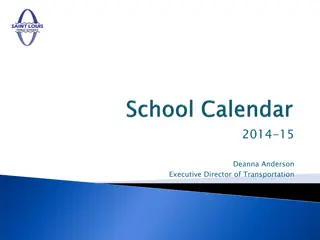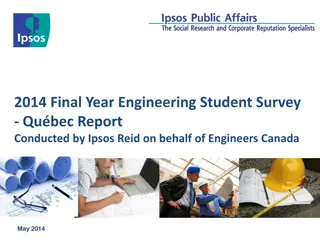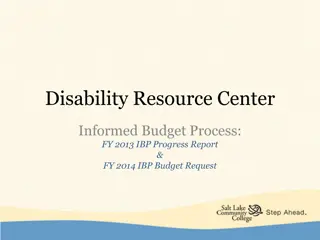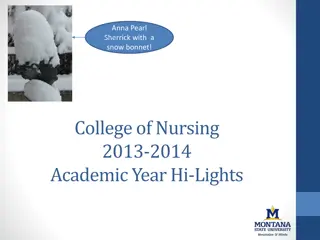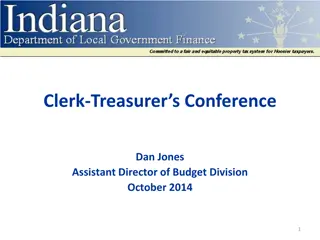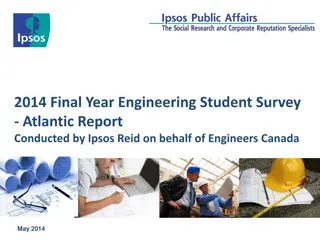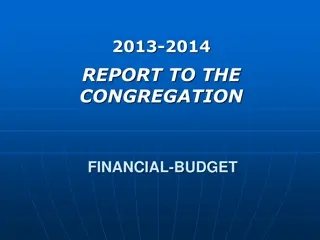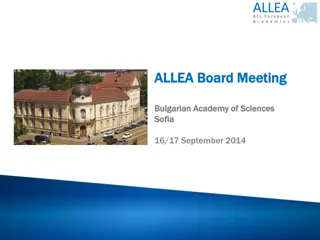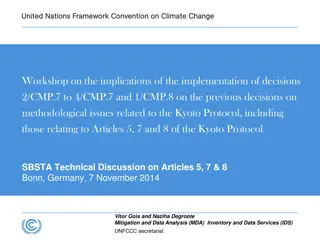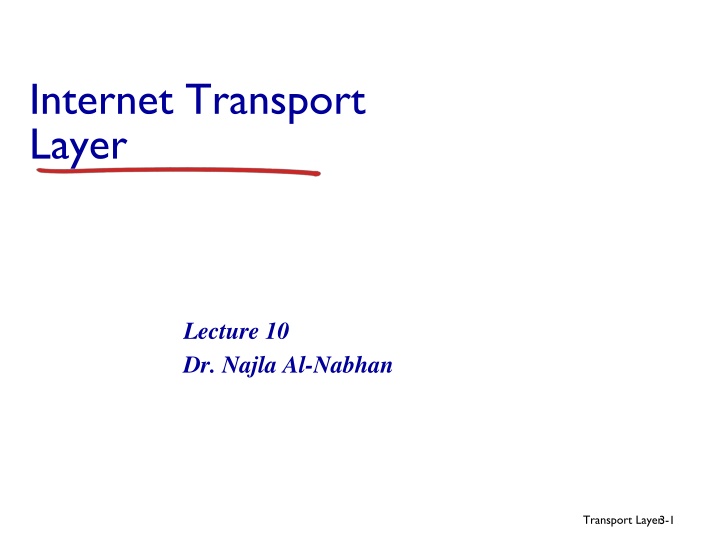
Internet Transport Layer Services and Protocols
Explore the principles behind transport layer services, multiplexing, demultiplexing, and reliable data transfer in this insightful lecture by Dr. Najla Al-Nabhan. Learn about TCP and UDP protocols, congestion control, and the logical communication between processes enabled by the transport layer in the Internet.
Download Presentation

Please find below an Image/Link to download the presentation.
The content on the website is provided AS IS for your information and personal use only. It may not be sold, licensed, or shared on other websites without obtaining consent from the author. If you encounter any issues during the download, it is possible that the publisher has removed the file from their server.
You are allowed to download the files provided on this website for personal or commercial use, subject to the condition that they are used lawfully. All files are the property of their respective owners.
The content on the website is provided AS IS for your information and personal use only. It may not be sold, licensed, or shared on other websites without obtaining consent from the author.
E N D
Presentation Transcript
Internet Transport Layer Lecture 10 Dr. Najla Al-Nabhan Transport Layer 3-1
Chapter 3: Internet Transport Layer our goals: understand principles behind transport layer services: multiplexing, demultiplexing reliable data transfer learn about Internet transport layer protocols: UDP: connectionless transport TCP: connection-oriented reliable transport TCP congestion control TransportLayer 3-2
Transport services and protocols application transport network data link physical provide logical communication between app processes running on different hosts transport protocols run in end systems send side: breaks app messages into segments, passes to network layer rcv side: reassembles segments into messages, passes to app layer more than one transport protocol available to apps Internet: TCP and UDP application transport network data link physical TransportLayer 3-3
Transport vs. network layer network layer: logical communication between hosts transport layer: logical communication between processes relies on, enhances, network layer services household analogy: 12 kids in Ann s house sending letters to 12 kids in Bill s house: hosts = houses processes = kids app messages = letters in envelopes transport protocol = Ann and Bill who demux to in- house siblings network-layer protocol = postal service TransportLayer 3-4
Internet transport-layer protocols reliable, in-order delivery (TCP) congestion control flow control connection setup unreliable, unordered delivery: UDP Extension of best-effort IP services not available: delay guarantees bandwidth guarantees application transport network data link physical network data link physical network data link physical network data link physical network data link physical network data link physical network data link physical application transport network data link physical network data link physical TransportLayer 3-5
Terminologies A network socket is an endpoint of an inter-process communication flow across a computer network. TCP Sockets is a combination of IP addresses and port numbers that allows applications to talk to other computers in the internet. Inter-process communication (IPC) is a set of methods for the exchange of data among multiple threads in one or more processes. TransportLayer 3-6
Terminologies Multiplexing A multiplexer (or mux) is a device that selects one of digital input signals and forwards the selected input into a single line. Demultiplexing a demultiplexer (or demux) is a device taking a single input signal and selecting one of many data- output-lines, which is connected to the single input. Delivering data to the correct sockets Handling data from multiple sockets TransportLayer 3-7
Multiplexing/demultiplexing multiplexing at sender: demultiplexing at receiver: handle data from multiple sockets, add transport header (later used for demultiplexing) use header info to deliver received segments to correct socket application P1 P2 application P4 application P3 socket transport process network transport transport link network network physical link link physical physical TransportLayer 3-8
How demultiplexing works host receives IP datagrams each datagram has source IP address, destination IP address each datagram carries one transport-layer segment each segment has source/ destination port number host uses IP addresses & port numbers to direct segment to appropriate socket 32 bits source port # dest port # other header fields application data (payload) TCP/UDP segment format TransportLayer 3-9
Connection-oriented demux TCP socket identified by 4-tuple: source IP address source port number dest IP address dest port number demux: receiver uses all four values to direct segment to appropriate socket server host may support many simultaneous TCP sockets: each socket identified by its own 4-tuple web servers have different sockets for each connecting client non-persistent HTTP will have different socket for each request TransportLayer 3-10
UDP: User Datagram Protocol [RFC 768] UDP use: streaming multimedia apps (loss tolerant, rate sensitive) DNS Simple Network Management Protocol (SNMP) reliable transfer over UDP: add reliability at application layer application-specific error recovery! no frills, bare bones Internet transport protocol best effort service, UDP segments may be: lost delivered out-of-order to app connectionless: no handshaking between UDP sender, receiver each UDP segment handled independently of others TransportLayer 3-13
UDP: segment header length, in bytes of UDP segment, including 32 bits header source port # dest port # checksum length why is there a UDP? no connection establishment (which can add delay) simple: no connection state at sender, receiver small header size no congestion control: UDP can blast away as fast as desired application data (payload) UDP segment format TransportLayer 3-14
UDP checksum Goal:detect errors (e.g., flipped bits) in transmitted segment sender: treat segment contents, including header fields, as sequence of 16-bit integers checksum: addition (one s complement sum) of segment contents sender puts checksum value into UDP checksum field receiver: compute checksum of received segment check if computed checksum equals checksum field value: NO - error detected YES - no error detected. But maybe errors nonetheless? More later . TransportLayer 3-15
rdt: channel with bit errors underlying channel may flip bits in packet checksum to detect bit errors the question: how to recover from errors: acknowledgements (ACKs): receiver explicitly tells sender that pkt received OK negative acknowledgements (NAKs): receiver explicitly tells sender that pkt had errors sender retransmits pkt on receipt of NAK TransportLayer 3-18
Rdt: has a fatal flaw! what happens if ACK/NAK corrupted? sender doesn t know what happened at receiver! can t just retransmit: possible duplicate handling duplicates: sender retransmits current pkt if ACK/NAK corrupted sender adds sequence number to each pkt receiver discards (doesn t deliver up) duplicate pkt stop and wait sender sends one packet, then waits for receiver response TransportLayer 3-19
Rdt: in action receiver receiver sender sender send pkt0 send pkt0 pkt0 pkt0 rcv pkt0 rcv pkt0 send ack0 send ack0 ack0 pkt1 ack0 rcv ack0 send pkt1 rcv ack0 send pkt1 pkt1 X rcv pkt1 send ack1 loss ack1 rcv ack1 pkt0 send pkt0 timeout rcv pkt0 send ack0 resend pkt1 pkt1 ack0 rcv pkt1 send ack1 ack1 rcv ack1 pkt0 send pkt0 rcv pkt0 send ack0 (a) no loss ack0 (b) packet loss TransportLayer 3-20
rdt: a NAK-free protocol using ACKs only instead of NAK, receiver sends ACK for last pkt received OK receiver must explicitly include seq # of pkt being ACKed duplicate ACK at sender results in same action as NAK: retransmit current pkt TransportLayer 3-21
rdt: stop-and-wait operation sender receiver first packet bit transmitted, t = last packet bit transmitted, t = L / 0 R first packet bit arrives last packet bit arrives, send ACK RTT ACK arrives, send next packet, t = RTT + L / R TransportLayer 3-23
Pipelined protocols pipelining: sender allows multiple, in-flight , yet-to- be-acknowledged pkts range of sequence numbers must be increased buffering at sender and/or receiver two generic forms of pipelined protocols: go-Back-N, selective repeat TransportLayer 3-24
Pipelining: increased utilization sender receiver first packet bit transmitted, t = last bit transmitted, t = L / 0 R first packet bit arrives last packet bit arrives, send ACK last bit of 2nd packet arrives, send ACK last bit of 3rd packet arrives, send ACK RTT ACK arrives, send next packet, t = RTT + L / R 3-packet pipelining increases utilization by a factor of 3! TransportLayer 3-25
Pipelined protocols: overview Go-back-N: sender can have up to N unacked packets in pipeline receiver only sends cumulative ack doesn t ack packet if there s a gap sender has timer for oldest unacked packet when timer expires, retransmit all unacked packets Selective Repeat: sender can have up to N unack ed packets in pipeline rcvr sends individual ack for each packet sender maintains timer for each unacked packet when timer expires, retransmit only that unacked packet TransportLayer 3-26
GBN in action sender receiver sender window (N=4) send pkt0 send pkt1 send pkt2 send pkt3 (wait) 0 1 2 3 4 5 6 7 8 0 1 2 3 4 5 6 7 8 0 1 2 3 4 5 6 7 8 0 1 2 3 4 5 6 7 8 receive pkt0, send ack0 receive pkt1, send ack1 receive pkt3, discard, (re)send ack1 Xloss rcv ack0, send pkt4 rcv ack1, send pkt5 0 1 2 3 4 5 6 7 8 0 1 2 3 4 5 6 7 8 receive pkt4, discard, (re)send ack1 receive pkt5, discard, (re)send ack1 ignore duplicate ACK pkt 2 timeout send pkt2 send pkt3 send pkt4 send pkt5 0 1 2 3 4 5 6 7 8 0 1 2 3 4 5 6 7 8 0 1 2 3 4 5 6 7 8 0 1 2 3 4 5 6 7 8 rcv pkt2, deliver, send ack2 rcv pkt3, deliver, send ack3 rcv pkt4, deliver, send ack4 rcv pkt5, deliver, send ack5 TransportLayer 3-27
Selective repeat in action sender receiver sender window (N=4) send pkt0 send pkt1 send pkt2 send pkt3 (wait) 0 1 2 3 4 5 6 7 8 0 1 2 3 4 5 6 7 8 0 1 2 3 4 5 6 7 8 0 1 2 3 4 5 6 7 8 receive pkt0, send ack0 receive pkt1, send ack1 receive pkt3, buffer, send ack3 Xloss rcv ack0, send pkt4 rcv ack1, send pkt5 0 1 2 3 4 5 6 7 8 0 1 2 3 4 5 6 7 8 receive pkt4, buffer, send ack4 receive pkt5, buffer, send ack5 record ack3 arrived pkt 2 timeout send pkt2 0 1 2 3 4 5 6 7 8 0 1 2 3 4 5 6 7 8 0 1 2 3 4 5 6 7 8 0 1 2 3 4 5 6 7 8 record ack4 arrived rcv pkt2; deliver pkt2, pkt3, pkt4, pkt5; send ack2 record ack4 arrived Q: what happens when ack2 arrives? TransportLayer 3-28
TCP reliable data transfer TCP creates rdt service on top of IP s unreliable service pipelined segments cumulative acks single retransmission timer retransmissions triggered by: timeout events duplicate acks TransportLayer 3-30
TCP sender events: data rcvd from app: create segment with seq # seq # is byte-stream number of first data byte in segment start timer if not already running think of timer as for oldest unacked segment expiration interval: TimeOutInterval timeout: retransmit segment that caused timeout restart timer ack rcvd: if ack acknowledges previously unacked segments update what is known to be ACKed start timer if there are still unacked segments TransportLayer 3-31
TCP: retransmission scenarios Host B Host A Seq=92, 8 bytes of data Seq=100, 20 bytes of data ACK=100 X timeout ACK=120 Seq=120, 15 bytes of data cumulative ACK TransportLayer 3-33
TCP ACK generation[RFC 1122, RFC 2581] TCP receiver action event at receiver delayed ACK. Wait up to 500ms for next segment. If no next segment, send ACK arrival of in-order segment with expected seq #. All data up to expected seq # already ACKed immediately send single cumulative ACK, ACKing both in-order segments arrival of in-order segment with expected seq #. One other segment has ACK pending immediately send duplicate ACK, indicating seq. # of next expected byte arrival of out-of-order segment higher-than-expect seq. # . Gap detected immediate send ACK, provided that segment starts at lower end of gap arrival of segment that partially or completely fills gap TransportLayer 3-34
Fairness (more) Fairness and UDP multimedia apps often do not use TCP do not want rate throttled by congestion control instead use UDP: send audio/video at constant rate, tolerate packet loss Fairness, parallel TCP connections application can open multiple parallel connections between two hosts web browsers do this e.g., link of rate R with 9 existing connections: new app asks for 1 TCP, gets rate R/10 TransportLayer 3-41

